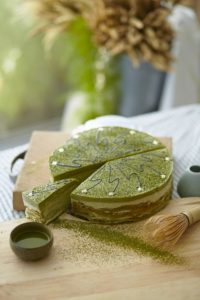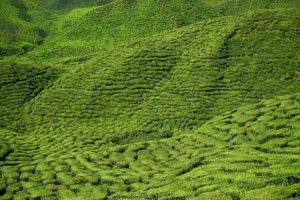Matcha is everywhere these days, especially Instagram, where people snap pics of beautiful green matcha lattes. The green tea powder is having a big moment, but it’s actually been around for thousands of years. The meaning has also changed significantly, and as a result, the quality.
The History
Matcha has a lengthy and colorful past that goes back a great many years. “Matcha” is a Japanese word that translates into “tea powder” “Cha” means “tea,” while “ma” means powder. It has long been a staple of Japanese tea culture. Legend has it the first seeds of the green tea plant came to Japan from China through a Zen monk named Eisai. He planted them in Kyoto, by a temple, and introduced the Zen philosophy. He was the first person to prepare tea powder by grinding the leaves.
A Zen monk by the name of Eisai brought the first seeds of the green tea plant that would eventually be used to manufacture matcha to Japan from China.
Matcha has a lengthy and colorful past that goes back a great many years.
The Production
Only the three varieties of green tea—Yabukita, Asatsuyu, and Gyokuro—can be used to make true matcha. The best leaves and stems are selected, then the tea bushes are covered with a screen for nearly 20 days before being shred, steamed, cooled, and baked to create matcha. After being separated from the stems to get rid of any sand or bacteria, they are covered by a screen for over 20 days. The best leaves and stems are then shredded, steamed, cooled, and baked. The finer the grain, the better. The best powder has extremely-fine grains with a diameter of only 2-20 micrometers.
Zen and Matcha
Zen and matcha became inseparable through the Japanese tea ceremony. The ceremony is about embracing the ideals of Zen, which focuses on the present and finding beauty in the everyday. Drinking the tea made sense, because it has a stimulating effect on the mind without leaving a jittery effect. A person can be both alert and calm.
When the tea was first being made, it was a rare commodity. Only very small quantities were made at a time, and only the upper class could drink in.
The Spread of Matcha
Matcha was originally a rare commodity, only available to the upper class in small quantities. However, in the mid 1700s, a new process called uji was invented, making matcha much more widely available. It is named after the same region where Eisai brought the first green tea plants and is where the majority of Japanese tea is still produced. In recent years, the matcha boom has spread to the United States, with Google search results for “matcha” skyrocketing in 2014 and sales exceeding $10 billion.
Manners for Drinking the Tea
The majority of Americans brew their matcha wrong. Matcha should never be served in a cup and should instead have a bitter, creamy, almost seaweed-like flavor. In order for the drinker to be enveloped by the fragrant steam, it must instead be served in a bowl. Before the powder sinks back to the bottom, it should be whisked into hot water for no longer than 1-2 minutes. Concentration and being fully present in the moment are prerequisites for drinking matcha well.
The Matcha Boom in the United States

Matcha flavored cake
The matcha boom in the United States can be traced back to 2014, where Google search results for “matcha” skyrocketed, and sales exceeded $10 billion. Specialty matcha cafes started opening across the country, and chefs began using the powder as flavoring for everything from cakes to noodles to chocolate.
Most Americans are drinking matcha incorrectly. Places like Starbucks pour in tons of milk and sugar, which essentially destroys the natural flavor. Matcha is supposed to have a bitter, creamy, and almost seaweed-like flavor. It should also never be served in a cup. Matcha must be in a bowl, so the fragrant steam envelops you as you drink. To make the tea, the matcha powder is whisked into hot water for only 1-2 minutes. You have to drink it quickly, before the powder settles back to the bottom.
Matcha was never intended to be served like coffee and grabbed on the go in a plastic cup. There’s a reason the tea was chosen as the tea for the famous Japanese tea ceremony. It takes concentration to heat the water just enough (too hot, and the tea is too bitter), whisk it just right, and then drink it quickly. One must be completely present in the moment!






